Where does bacteria come from and what can be done?
Bacteria can come from many different sources such as pet waste, septic systems, agriculture, wildlife, and combined or sanitary sewage overflows.
Domestic pets
The issue
Most pets that poop on the lawn are warm blooded mammals, which means that their excrement contains E. coli bacteria. During snowmelt or rainwater events, this bacteria is often washed into local streams and eventually finds its way to the Huron River. When bacteria levels are elevated, the river and tributaries become potentially unsafe for recreation, preventing uses such as canoeing, swimming, or fishing. The water also becomes unhealthy for wildlife and river ecosystems.
How to fix it
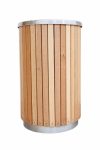 Poop-scooping. Most people scoop their pet’s poop. If you don’t already pick up your pet’s waste, please join them by grabbing a baggy on your way out the door and stoop, scoop, and drop into the nearest trash can. It’s the neighborly thing to do.
Poop-scooping. Most people scoop their pet’s poop. If you don’t already pick up your pet’s waste, please join them by grabbing a baggy on your way out the door and stoop, scoop, and drop into the nearest trash can. It’s the neighborly thing to do.
Wise-walking. When taking you pet for a walk, consider first how close you are to the nearest water body. If you’re within 50 yards of a stream, pond, or lake, it is likely that bacteria from your pet’s poop is washing directly into the water body following the next snowmelt or rain event. To protect the stream, stay as far back as possible. Avoid “pet walk” areas that are adjacent to streams, especially areas that have a steep gradient toward the stream. In general, the closer you are to a body of water, the more diligent you should be in scooping your pet’s poop.
This is especially important in winter months when lakes and streams are frozen. Allowing your pet to poop on the ice will cause bacteria to wash into the lake or stream when the ice melts. In addition, when the snow pack is heavier, spring runoff is heavier. Keep these geological processes in mind when walking your pet.
Septic Systems
See how septic systems work here and tips for care from MSU’s Septic System Management Folder
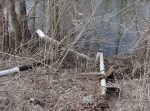
The issue: illicit connections
Fifty years ago, it was common practice to connect septic tank outlets directly to water ways (e.g., ditches and streams) or to storm sewers. While this practice is no longer legal, old systems often retain this setup. In Washtenaw County, septic systems are inspected at the “Time of Sale.” Systems that are illicit are brought up to code, or as close as possible to code, depending on the situation. This may include repairs or the installation of a leach (or drain) field at the end of the system. The leach field filters out the solids and purifies the water before returning it naturally to the groundwater.
How to fix it
Don’t wait for a time-of-sale inspection to eliminate your illicit connection. Install a leach field and protect our streams.
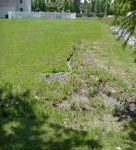 The issue: leakage and failing systems
The issue: leakage and failing systems
Septic systems can leak and eventually fail. Leakage can result from broken drainage pipes due to settling or ground compaction. It can also be the result of overloading the system by directing rainwater drainage from roofs through the septic tank. It is unnecessary to treat such water. Once a septic system becomes overwhelmed, sewage can pond on the ground near the septic tank or drainfield or back up into buildings. This, in turn, can pollute ditches, creeks, and shallow groundwater supplies.
How to fix it
Maintain your system by having it pumped and inspected every 2 to 3 years. This can prevent costly repairs. See Maintain Your Septic System for more detailed information, service providers and resources.
In addition, run rainwater gutters and sump pumps onto the lawn, away from your house. Avoid connecting them to your septic system.
Agriculture
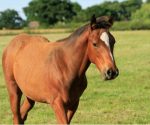 The issue: pasture runoff and unrestricted access to water for livestock
The issue: pasture runoff and unrestricted access to water for livestock
Pasturing of livestock (including horses) is a common practice throughout the state. Runoff from these pastures can carry significant amounts of nutrients and bacteria into water bodies if not properly managed. Occasionally, livestock find or are given unrestricted access to water. This can be the result of improper fencing, broken fencing, or standing water in pastures as a result of heavy rainfall. Livestock are often attracted to water, especially during hot summer months. This can be one of the most significant sources of E. coli contamination due to the direct deposition of manure into surface waters.
How to fix it
Erect permanent or temporary fencing around all exposed surface water, including drain tile outflows, ditches, and seasonal ponds or flows. In addition, vegetative buffer strips can be used to reduce runoff and filter nutrients and bacteria out before runoff percolates into the groundwater adjacent to streams. Such measures prevent both erosion and bacterial contamination of lakes and streams.
 The issue: manure spreading
The issue: manure spreading
Spreading livestock manure in the spring or fall is a common practice and can be a rich and sustainable source of Phosphorus (P), Potassium (K), and Nitrogen (N) for pastures or croplands. However, manure also contains strains of E. coli and other potentially harmful bacteria and, therefore, needs to be treated responsibly. Application before rain events or upon snow-covered or frozen fields can lead to rapid runoff into streams and dramatically elevate bacteria counts to dangerous levels, leading to enforcement measures by the MDEQ. Storage of manure in lagoons or bunkers can lead to similar problems.
How to fix it
The Michigan Department of Agriculture and Rural Development has developed Generally Accepted Agricultural and Management Practices (GAAMPS) for handling manure in ways that protect farmland, neighbors, and the environment. These guidelines can be found in their GAMPS for Manure Management and Utilization. Two of the most important considerations are proximity to surface water and slope of the field, and a general guideline is to not spread within 150 feet of surface water. For guidance on winter surface application, see Natalie Rector’s Spread Manure in Winter with Great Caution (Michigan Dairy Review 2009, p. 14).
Wildlife
 The issue: waterfowl
The issue: waterfowl
Open, grassy areas near water bodies attract waterfowl, such as geese or ducks. If you own property adjacent to a lake or stream, you are familiar with the mess these birds can leave behind. They contaminate both the beaches and riparian zones. Rainwater washes these bacteria-laden contaminants directly into the lake or stream.
How to fix it
Waterfowl congregate in open, grassy areas because they can clearly see any approaching predators. Disrupting lines of sight and offering possible hiding places for would-be predators decreases the likelihood that geese will find your property an attractive roosting ground. Waterfowl are also attracted to long, uninterrupted shorelines. Placing obstacles such as trees or shrubs near the water’s edge can be effective deterrents.
Likewise, planting denser riparian vegetation, such as trees and tall grasses, within the first 15 yards of a shoreline will decrease waterfowl traffic. Merely leaving the lawn to grow longer near the shoreline can also be effective. In general, leaving the shoreline to develop naturally can lead to a more healthy and robust stream ecosystem.
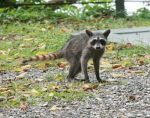 The issue: four-legged wildlife
The issue: four-legged wildlife
Other wildlife (e.g., raccoons, opossums, skunks, deer, etc.) can also pose the threat of bacterial contamination. These animals often roam throughout the neighborhood or countryside at night and are attracted to human wastes. Some wildlife may also occupy storm sewer drains.
How to fix it
To discourage nighttime visitors, avoid leaving food or waste outdoors overnight. Especially avoid leaving it near streams or lakes.
Combined or Sanitary Sewer Overflows (CSOs or SSOs)
The issue
In some older communities outside the Huron River Watershed, sewer systems were built that combined domestic waste water with storm water loads in the same drainage pipes. During dry seasons, this drainage is treated by wastewater treatment plants. However, during storm events, wastewater treatment plants become overwhelmed and some of the drainage must be released untreated as a Combined Sewer Overflow (CSO). Though there has been a long-term effort to separate the two drainage systems where they exist, some of these systems are still in use in cities throughout the state today.
How to fix it
Sanitary Sewer Overflows (SSO), on the other hand, are illegal discharges of raw or inadequately treated sewage or industrial waste from municipal separate sanitary sewer systems that are designed to carry only domestic sanitary sewage. The discharge may end up in basements, city streets, properties, rivers, or streams. These often occur during wet weather conditions because of infiltration of groundwater through cracks in drainage pipes; rainwater drainage from residential roof drainage systems; pump or power failures; undersized sanitary systems; or system failures due to tree roots, shifting or settling pipes, or sediment buildup. When SSOs are frequent in a watershed, they can lead to serious public health concerns and water body impairments. The MDEQ has broad authority to regulate SSOs. However, because they are illegal, they often go unreported.
Source: Michigan Department of Environment, Great Lakes, and Energy.




